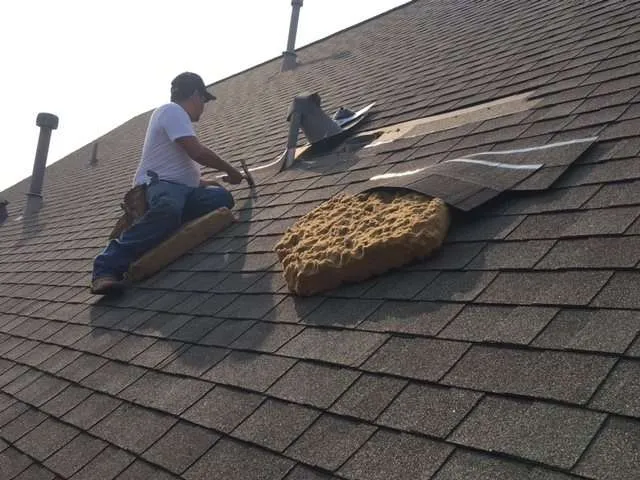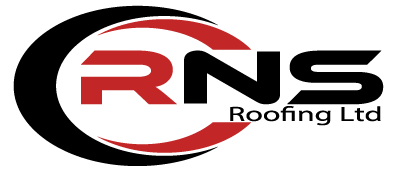Roof replacements are a significant investment aimed at enhancing your home’s strength, value, and appearance. However, even with a newly installed roof, how to address unexpected roof issues after a replacement becomes crucial knowledge for homeowners. Ignoring these issues can lead to costly repairs and emergencies. Homeowners must understand how to address these unexpected roof issues after a replacement to protect their investment and ensure their homes remain secure.
In this guide, we will explore common unexpected roof problems after a replacement and provide practical solutions for handling them.

Common Unexpected Roof Issues After a Replacement:
A roof replacement is typically done to improve a property’s safety, value, and visual appeal. However, even after a careful installation process, unexpected issues can still occur. These problems can range from minor inconveniences to significant concerns that require immediate attention.
1. Leaks and Water Damage
- Cause: Poor installation, broken flashing, or improper seals around vents, chimneys, or skylights can still result in leaks, even with a new roof.
- Impact: If left unaddressed, water intrusion can cause extensive damage to insulation, the roof structure, and even the interior of your home.
2. High Winds and Storm Damage
- Cause: Extreme weather, such as strong winds, hail, or heavy rain, can strain a newly replaced roof, particularly if materials are subpar or not installed correctly.
- Impact: Shingles can lift, crack, or become dislodged, leaving the roof deck exposed to water penetration and further damage.
3. Faulty Flashing
- Cause: Flashing is crucial for preventing water from entering vulnerable parts of the roof, such as valleys, eaves, and junctions with walls or chimneys.
- Impact: Improperly installed or damaged flashing can allow water to seep behind it, leading to roof instability and leaks.
4. Ice Dams
- Cause: In colder climates, ice dams can form at the roof’s edges, blocking proper drainage of melting snow and ice.
- Impact: Ice dams force water to back up under the shingles, causing leaks and potential damage to the roof structure and your home’s interior.
5. Poor Ventilation
- Cause: Inadequate roof ventilation can result in excess moisture buildup in the attic.
- Impact: This can cause mould growth, wood rot, and faster deterioration of roofing materials.
6. Tree Damage
- Cause: Overhanging branches or trees close to your home can pose a risk during storms or high winds.
- Impact: Falling branches can puncture shingles or damage the roof, leading to leaks or structural problems.
7. Animal Intrusions
- Cause: Gaps or weak spots in the roof can allow pests like birds, squirrels, or raccoons to enter.
- Impact: These intrusions can weaken the roof structure and allow both pests and water to invade your home.
How to Address Unexpected Roof Issues after a Replacement
Even after a roof replacement, unexpected problems can arise. To avoid further damage and costly repairs, homeowners must act quickly when these issues surface.
1. Identify the Problem
Conduct a thorough inspection from both the attic and exterior of your home to determine the exact issue. This could be a leak, broken shingles, faulty flashing, or visible damage.
2. Assess the Severity
Evaluate the urgency of the problem. Serious leaks, damage compromising the roof’s structural integrity, or major flashing issues should be treated as emergencies.
3. Document the Damage
Take photos or videos to document the damage for insurance claims and potential warranty disputes. Keep detailed records of when and how the problem occurred.
4. Contact a Professional Roofer
Always reach out to a licensed and insured roofer to handle repairs. For urgent issues, contact a contractor immediately.
For Professional Contractors Call Now: 07469 582272
5. Schedule an Inspection
Arrange for a detailed roof inspection to assess the extent of the damage and determine the necessary repairs. Make sure the inspection covers vents, flashing, shingles, and roof structures.
6. Address Immediate Repairs
Authorise emergency repairs if the damage poses a risk to your home or safety. Temporary solutions can prevent further harm until permanent fixes are made.
7. Review Warranty Coverage
Check your roof warranty for coverage details. If the problem stems from poor materials or workmanship, contact the installer or manufacturer to initiate a warranty claim.
8. Implement Preventive Measures
Work with your roofer to identify underlying vulnerabilities, such as inadequate ventilation or damaged flashing. Implement preventive solutions to reduce the risk of future issues.
Maintenance Tips for Preventing Roof Problems After Replacement
Proactive roof maintenance is essential to prolong the life of your roof and minimise the risk of unexpected issues.
- Seasonal Inspections: Schedule professional inspections after major weather events and at least once a year.
- Gutter Cleaning: Clear debris from gutters and downspouts regularly to ensure proper drainage.
- Tree Trimming: Keep nearby trees pruned to avoid falling branches damaging the roof.
- Check for Loose Shingles: After storms or strong winds, inspect the roof for lifted or missing shingles.
- Proper Ventilation: Ensure your roof has adequate ventilation to prevent moisture buildup in the attic.
The Importance of Roof Warranties
Warranties play a crucial role in post-replacement roof care. Understanding your warranty’s terms can save you from costly repairs down the line.
Types of Roof Warranties:
- Manufacturer’s Warranty: Covers defects in roofing materials. Length can range from 20 to 50 years, depending on the material.
- Contractor’s Warranty: Covers workmanship, typically lasting from 1 to 10 years. Review this to ensure your contractor stands behind their work.
Emergency Roof Repair Solutions
When unexpected damage occurs, temporary fixes can minimise further problems until a professional roofer arrives.
Temporary Solutions:
- Tarps: Use tarps to cover holes or damaged areas and prevent leaks during storms.
- Sealants: Apply roof sealant around problematic areas to prevent water intrusion until repairs can be made.
Energy Efficiency and Insulation Post-Roof Replacement
A properly installed roof can improve your home’s energy efficiency. Ensure your attic is well-insulated and ventilated to reduce heating and cooling costs.
- Insulation: Helps maintain indoor temperatures, reducing the strain on HVAC systems.
- Ventilation: Prevents heat buildup in summer and moisture issues in winter, protecting your roof from premature wear.
Conclusion
Unexpected roof issues can arise even after a replacement, but they can be effectively managed with prompt action and proper maintenance. By understanding common post-replacement problems and addressing them quickly, homeowners can protect their investments and ensure their roofs remain secure for years to come. Remember, regular inspections and proactive maintenance are key to preserving the longevity and integrity of your roof.
FAQs:
What happens if it rains while getting a new roof?
Roofing work may be delayed due to safety concerns and material damage. Contractors will typically cover exposed areas with tarps to prevent water infiltration.
Why Do I Have Ceiling Damage After My Roof Replacement?
Ceiling damage could be due to improper installation, poor sealing, or underlying structural issues that were missed during the roof replacement.
How much damage does a roof need to be replaced?
While extensive leaks or missing shingles can warrant replacement, widespread wear and nearing the roof’s lifespan also justify professional evaluation.

